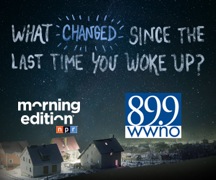Postponed election lessons from Katrina
14th April 2020 · 0 Comments
Unlike our upcoming delayed election to be held on June 20, where the candidates in the field had already qualified for the originally scheduled April 4, 2020 primary, the postponed municipal election in the wake of Hurricane Katrina had not formally possessed a set field of candidates – who already filed with the secretary of state’s office at the time Gov. Blanco delayed the contest. (The change in circumstance helped spawn a myriad of challengers to Ray Nagin as a result in early 2006. Prior to the storm, there had only been two challengers planning to run.)
Nevertheless, outside of that very considerable difference, the recently postponed elections in New Orleans, and throughout Louisiana, bear a striking resemblance to the challenges faced in mounting the balloting locations after the worst storm the Pelican State ever knew. Admittedly, instead of flooded homes with voters scattered across the United States, sequestered electorates stand house-bound, utterly afraid to gather in groups at a polling station. Even if the government-ordered isolation ends on April 30, evidence from China suggests that a second wave of the coronavirus could ravage through our city and it’s surrounding suburban/rural parishes. Touching a touchpad as voters line up at near-touching distance in late June may be almost as discouraging for turnout as traveling hundreds of miles to a still-devastated city to cast a ballot in late April 2006. Consequently, it is worth remembering the lessons learned from the last overwhelming disaster which shook up everyone’s lives.
In the wake of Katrina, then-Governor Kathleen Blanco postponed the February 6, 2006 elections, yet, she did so initially without an alternative date or plan of action to get voters to the polls. It was not until January 24, that she ended months of public debate and legal wrangling by signing Secretary of State Al Ater’s plan to reschedule the primary election for April 22 and the runoff for May 20. However, Ater had used the interregnum well, devising a three tier method to encourage scattered voters to be able the cast a ballot.
Principally, absentee ballots were made available, almost without question. They could be posted from anywhere, and due to the special circumstance of the storm’s scattering effect, requested for nearly any reason, including for those remaining in metro New Orleans (usually at a temporary address).
Secondly, early voting locations were drastically expanded. Even other cities outside of Louisiana, those with large numbers of evacuees, hosted the balloting booths. Open for over a week, the remote precincts provided easy opportunities to early vote.
Of course, lastly, the Election Day itself proceeded as normal for those able to go to the polls, yet the three-pronged approach not only provided greater voter access, but it also lessened the concentration of crowds of the eventual primary and runoff.
That historical example provides relevant guidance. Republicans worry about postal voting leading to fraudulent “phantom votes.” Hence, they are wary of allowing ballots to be cast without photo ID. However, in the post-Katrina example, a precedent exists where special environmental circumstances could convince GOP legislators to support a one-time exemption for postal voting – even for those still in their home city.
Gov. John Bel Edwards suggested last Thursday that schools will remain closed for the remainder of the term, and hinted that despite the Trump administration’s hoped-for plan to re-open the economy (and most public spaces) by May 1, the intensity of the outbreak in Louisiana might require sequestering of our population far longer. Social distancing requirements could stretch into July to avoid a second outbreak.
If ever there was a necessity to allow those infected, those endangered, or even those just nervous to vote safely from home, the coronavirus pandemic should motivate the legislature – which is technically in session even as it rarely meets – to allow postal voting this summer. With judicial and clerkship races mostly dominating the ballot, along with a few small town mayoral elections (and the presidential primaries already decided), the GOP’s political anxieties should subdue themselves enough to allow mail-in-voting on – at least – these sole occasions.
A simple question of whether enough precinct captains will be available to work on Election Day could sway that legislative debate. The Wisconsin elections saw major cities like Milwaukee reduced to a handful of precincts, with hundreds of yards of lines of potential voters due to lack of staff. The polling stations’ crowding became a pandemic outbreak potential nightmare.
Of course, not everyone’s going to want to vote by mail. Creating alternative early voting locations, away from city government offices, remains imperative. Why not place many of them at the very locations that voters must visit even in the time of plague? Could the example from Hurricane Katrina of placing early voting in unusual locations be extended to voting at grocery stores?
Our supermarkets and their valiant staffers have already adopted the protocols to safely handle thousands of patrons. What if the governor and the legislature were to ask the Rouses, Circle Food Store, the Langenstein’s, the Breaux Marts, the Zuppardo’s, the Dorignac’s, and the other major chains to host early voting locations. The electorate could make groceries and conduct their constitutional duty, while minimizing the human contact that queuing up at government offices creates. After all, registrar offices stand crowded even in normal elections.
This article originally published in the April 13, 2020 print edition of The Louisiana Weekly newspaper.



